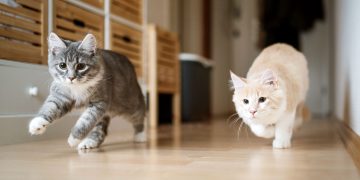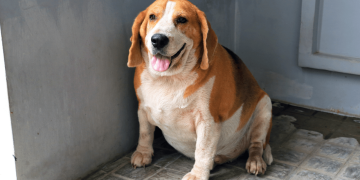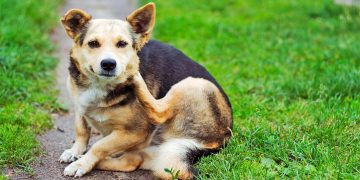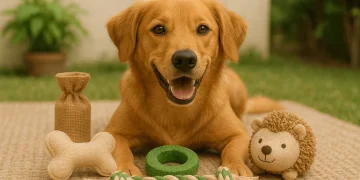Feeding your pet the right amount of food is crucial for maintaining their health and well-being. Overfeeding can lead to obesity, which increases the risk of various health issues, while underfeeding can result in malnutrition and low energy levels. Every pet has unique dietary needs based on factors like age, size, breed, and activity level. In this article, we will discuss effective ways to control the proper amount of food for your pet and ensure they maintain a healthy weight.
1. Understand Your Pet’s Nutritional Requirements
Each pet has specific nutritional needs depending on their life stage (puppy, adult, senior), size, activity level, and health condition. Understanding these requirements is the first step in controlling their food intake.
Factors to Consider:
- Age: Puppies and kittens have higher energy needs compared to adult or senior pets. Growing animals require more calories and nutrients to support development. Senior pets, on the other hand, may need fewer calories and foods that support joint and organ health.
- Size: Larger pets require more food than smaller pets. However, the amount of food is not just based on size; it also depends on their metabolism and activity level.
- Breed: Different breeds have different caloric needs. For example, a Greyhound may need fewer calories than a Border Collie, even if both dogs weigh the same.
- Activity Level: Active pets, such as working dogs or cats that are outdoors often, need more food than pets that are less active or spend a lot of time indoors.
Consult a Veterinarian:
If you’re unsure about how much to feed your pet, your veterinarian can provide guidance based on your pet’s specific health, age, and activity level. They may also recommend a specialized diet if your pet has specific health conditions like diabetes, obesity, or kidney disease.
2. Follow the Feeding Guidelines on Pet Food Labels
Pet food manufacturers typically provide feeding guidelines on their packaging. These guidelines give an estimate of how much food to feed your pet based on their weight and age. While these recommendations are useful, keep in mind that they are just guidelines and may need adjustment based on your pet’s individual needs.
How to Use Feeding Guidelines:
- Check the label: Look for the recommended daily amount of food for your pet’s weight and size. For instance, if the label suggests feeding your dog 1 cup of dry food per day for a 20-pound dog, that’s a starting point.
- Measure the food: Use a standard measuring cup to ensure you’re giving your pet the right amount of food. This will help prevent overfeeding or underfeeding.
- Adjust based on your pet’s condition: If your pet is gaining or losing weight too quickly, adjust their food intake accordingly. This may mean reducing the amount for overweight pets or increasing it for underweight pets.
3. Monitor Your Pet’s Weight and Condition
Regularly monitoring your pet’s weight and body condition is essential to ensure they’re receiving the right amount of food. Obesity is one of the most common health issues in pets, leading to diabetes, joint problems, and heart disease.
Steps to Monitor Weight:
- Weigh your pet regularly: Weigh your pet at least once a month, or more frequently if you notice significant changes in their appearance or behavior.
- Assess their body condition: Look for signs of obesity, such as a lack of a visible waistline, or ribs that are difficult to feel. A healthy pet should have a defined waist and be able to feel their ribs with light pressure.
- Track food intake: Keep track of how much food you’re providing and make sure to adjust based on your pet’s activity level and weight.
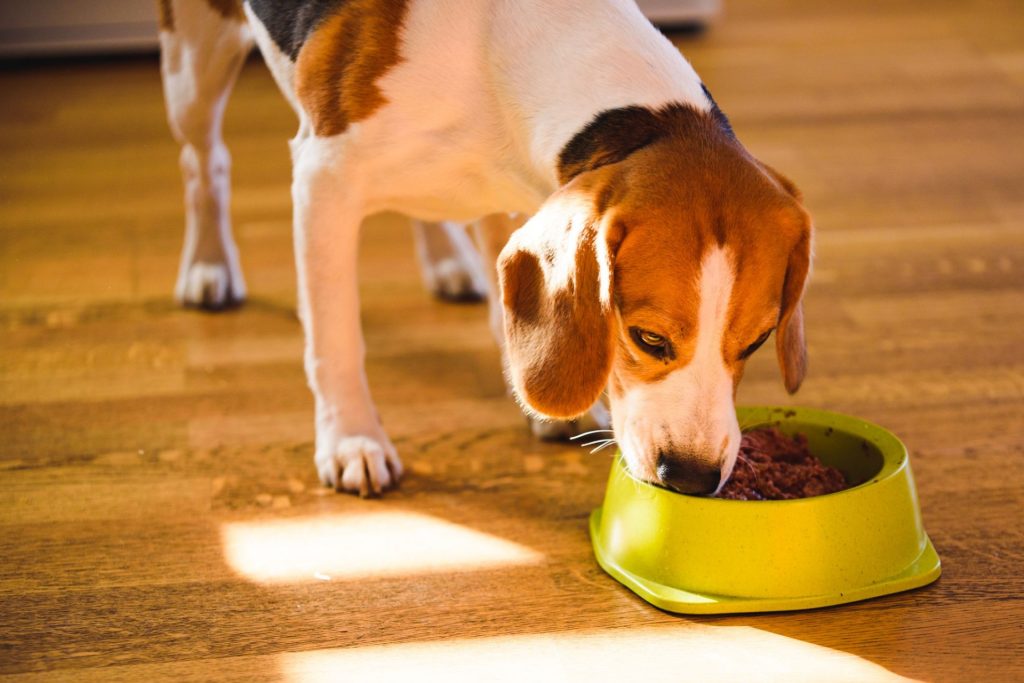
4. Consider Feeding Multiple Smaller Meals
Instead of feeding your pet one or two large meals per day, you can split their food into smaller meals. This is especially beneficial for pets that are prone to digestive issues or pets with medical conditions such as diabetes.
Benefits of Multiple Meals:
- Prevents overeating: Smaller meals help prevent overeating at one time, which can cause stomach discomfort or bloating.
- Helps with digestion: Smaller, more frequent meals can aid in better digestion and nutrient absorption.
- Regulates blood sugar: For pets with diabetes, smaller meals help stabilize blood sugar levels throughout the day.
How to Feed Multiple Meals:
- For dogs, you can divide their daily food amount into two or three meals, depending on their age and needs.
- For cats, feeding multiple smaller meals throughout the day can be a good option, as they are natural grazers.
5. Use Food Dispensing Toys or Slow Feeders
If your pet tends to eat too quickly, using food dispensing toys or slow feeders can help regulate their food intake and prevent them from overeating. Some pets eat too quickly, which can lead to choking, vomiting, or even bloating.
Benefits of Slow Feeders and Food Dispensing Toys:
- Promotes slower eating: These tools make your pet work for their food, which can slow down their eating pace and help them feel fuller for longer.
- Mental stimulation: Food dispensing toys can provide mental stimulation and enrichment, which is especially important for active or bored pets.
- Prevents obesity: By slowing down their eating, you can help prevent overeating and encourage better digestion.
6. Don’t Overfeed with Treats or Table Scraps
While it’s tempting to give your pet treats and scraps from your meals, excessive treats or human food can quickly add up and lead to weight gain or nutritional imbalances. Treats should be accounted for as part of your pet’s daily caloric intake.
How to Control Treats:
- Use treats as part of the daily food allowance: Make sure that treats and table scraps are factored into the total amount of food your pet should be eating in a day. A general rule of thumb is that treats should not make up more than 10% of your pet’s daily calories.
- Choose healthy treats: Opt for low-calorie, healthy treats, such as carrot sticks or small pieces of apple, instead of high-calorie commercial treats.
- Avoid harmful human foods: Never give your pet foods that are toxic or harmful to them, such as chocolate, onions, garlic, or grapes.
7. Adjust Food Portions for Activity Level
Your pet’s activity level plays a significant role in determining how much food they need. Pets that are more active will require more calories to sustain their energy levels, while sedentary pets may need fewer calories.
Adjusting for Activity:
- Active pets: If your pet is highly active (e.g., working dogs, agility dogs, or outdoor cats), they will burn more calories and need a higher food intake to keep up with their energy needs.
- Sedentary pets: On the other hand, pets that are less active or are prone to staying indoors should have their food intake reduced to avoid obesity and maintain a healthy weight.
8. Consider Special Diets or Health Conditions
Pets with special health conditions, such as diabetes, kidney disease, or allergies, may require specific dietary adjustments. For example, diabetic pets may need to have their food intake evenly distributed throughout the day to help manage blood sugar levels.
Consult Your Veterinarian:
- If your pet has any health concerns or you notice changes in their appetite, it’s important to consult with a veterinarian. Your vet can provide a feeding plan that’s tailored to your pet’s unique needs.
Conclusion
Controlling the right amount of food for your pet is essential for their long-term health and happiness. By understanding your pet’s specific nutritional needs, following feeding guidelines, and regularly monitoring their weight, you can ensure they are getting the proper amount of food. Using food dispensers, adjusting for activity level, and being mindful of treats can also help maintain a healthy diet for your pet. Remember, every pet is unique, and what works for one may not work for another, so it’s important to customize their diet based on their individual needs. If in doubt, always consult your veterinarian for advice on proper portion control.






